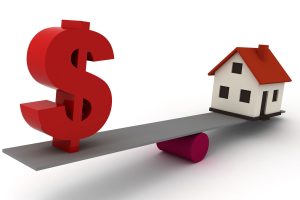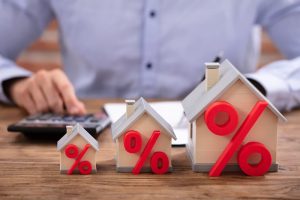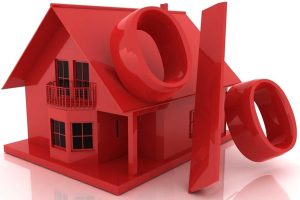
When it comes to property investment, negative gearing has long been a topic of debate and discussion. While this strategy offers certain advantages in terms of tax minimization and capital gains potential, it also comes with its fair share of drawbacks, such as cash flow management and the risk of capital losses.
In this blog post, we will delve into the world of negatively geared property investments, exploring the pros and cons, comparing it to positive gearing, and providing practical tips for success.
So, let’s begin our journey into the realm of negative gearing.
Short Summary
- Negatively geared property investments refer to a strategy of incurring losses from owning a property, which can be offset against other income for tax purposes.
- Advantages include the potential benefit of tax minimization and capital gains. Disadvantages such as cash flow management and risk of capital loss should also be considered.
- Careful research into one’s personal circumstances, investment goals, market conditions, and location is essential in order to make the most beneficial decision when investing in negatively geared properties.
Understanding Negatively Geared Property Investments
 In simple terms, a negatively geared property investment occurs when the expenses associated with owning a property, such as loan repayments, maintenance costs, and management fees, exceed the rental income generated by the property. As a result, the investor incurs a loss that can be offset against their other income for tax purposes. This strategy stands in contrast to positively geared property investments, where rental income surpasses property expenses and generates positive cash flow.
In simple terms, a negatively geared property investment occurs when the expenses associated with owning a property, such as loan repayments, maintenance costs, and management fees, exceed the rental income generated by the property. As a result, the investor incurs a loss that can be offset against their other income for tax purposes. This strategy stands in contrast to positively geared property investments, where rental income surpasses property expenses and generates positive cash flow.
Common types of negatively geared properties include residential properties like houses, apartments, and townhouses, as well as commercial properties like office buildings, warehouses, and retail stores. It’s important to note that negative gearing isn’t limited to specific property types; instead, property costs play a significant role in determining whether a property will be negatively or positively geared.
The Mechanics of Negative Gearing
Negative gearing works by allowing investors to claim tax deductions for the expenses associated with their investment property, such as:
- Mortgage repayments
- Interest on the mortgage
- Holding costs
- Property management fees
- Body corporate fees
- Rates
- Maintenance
These tax deductions can help offset the losses incurred due to the property’s expenses exceeding its rental income.
The ultimate goal of negative gearing is to achieve capital gains when the property’s value increases over time. Investors hope that their property will appreciate enough to cover the costs of their investment and generate a profit upon sale. This potential for capital growth is a key driving factor behind many investors choosing negative gearing as their investment strategy.
Common Types of Negatively Geared Properties
 As mentioned earlier, negatively geared properties can encompass a wide range of residential and commercial real estate, including investment properties. The specific type of property an investor chooses to invest in will largely depend on their financial circumstances and investment goals. For instance, some investors may prioritize high rental yields, while others may focus on potential capital growth. With various strategies in property investing, it’s essential to find the right approach that suits your needs.
As mentioned earlier, negatively geared properties can encompass a wide range of residential and commercial real estate, including investment properties. The specific type of property an investor chooses to invest in will largely depend on their financial circumstances and investment goals. For instance, some investors may prioritize high rental yields, while others may focus on potential capital growth. With various strategies in property investing, it’s essential to find the right approach that suits your needs.
Regardless of the property type, investors in negatively geared properties should also be aware of the potential tax implications, such as Capital Gains Tax (CGT). CGT is a tax imposed on the net profit derived from selling an investment property, and it applies to both negatively geared and positively geared properties when they are sold for a profit. Factors influencing the amount of CGT payable include the length of ownership and the availability of discounts.
Advantages of Negatively Geared Properties
 One of the main advantages of negatively geared properties is tax minimization. By compensating their property-related losses against their other income, investors can effectively lower their taxable income and pay less income tax. This tax benefit can help mitigate the losses incurred due to negative gearing, making the strategy more appealing to some investors.
One of the main advantages of negatively geared properties is tax minimization. By compensating their property-related losses against their other income, investors can effectively lower their taxable income and pay less income tax. This tax benefit can help mitigate the losses incurred due to negative gearing, making the strategy more appealing to some investors.
Another advantage of negatively geared properties is their potential for capital gains. Investors hope that their property will appreciate enough over time to not only cover the costs of their investment but also generate a sizable profit upon sale. This potential for capital growth, combined with the tax benefits, can make negative gearing an attractive option for those looking to grow their wealth through property investment.
Tax Minimization
Negative gearing allows investors to minimize their taxes by offsetting their investment property losses against their other income. For example, if an investor owns a property with annual expenses that exceed rental income by $10,000, they can declare that $10,000 loss against their income tax.
The tax deductions associated with negatively geared properties can include depreciation, which accounts for the general wear and tear of an investment property and the decline in value over time of the building structure and, for new dwellings, the fittings within the property. Additionally, investors may be able to claim some deductions for equipment assets found within the property. This is different from the tax deductions available in the case of positive gearing.
Capital Gains Potential
The potential for capital gains is another key advantage of negatively geared property investments. As property values increase over time, investors can benefit from the appreciation of their investment property and, ultimately, sell it for a profit. This potential for capital growth can make negative gearing an attractive option for those looking to build wealth through property investment.
When considering negative gearing as a strategy, it’s crucial to remember that the potential for capital gains is not guaranteed. Factors such as market conditions, location, and property type can all influence the property’s appreciation potential. As such, investors should conduct thorough research and due diligence before committing to a negatively geared investment.

Disadvantages of Negatively Geared Properties
 While negative gearing offers certain advantages, it also comes with several drawbacks that investors must consider. One of the main disadvantages is the ongoing cash flow management required to cover the property’s expenses. Since negatively geared properties generate a loss, investors must ensure they have the financial capacity to cover the property’s expenses while waiting for capital gains to materialize.
While negative gearing offers certain advantages, it also comes with several drawbacks that investors must consider. One of the main disadvantages is the ongoing cash flow management required to cover the property’s expenses. Since negatively geared properties generate a loss, investors must ensure they have the financial capacity to cover the property’s expenses while waiting for capital gains to materialize.
Another disadvantage of negatively geared properties is the risk of capital losses. If property values decline or the investor is forced to sell their property at a loss, the potential tax benefits of negative gearing may be outweighed by the financial losses incurred. As such, investors must carefully weigh the potential risks and rewards of negatively geared property investments before deciding on this strategy.
Cash Flow Management
Cash flow management is a critical consideration for investors in negatively geared properties. As the property’s expenses exceed its rental income, the investor must have a reliable income source to cover the interest repayments and other costs associated with the investment. This can be particularly challenging in times of economic uncertainty or if the property remains vacant for an extended period.
To mitigate these risks, investors should:
- Establish a contingency plan to ensure they can continue to cover the property’s expenses in the event of unforeseen circumstances
- Set aside an emergency fund
- Explore alternative income sources to cover the property’s costs.
Risk of Capital Losses
Investing in negatively geared properties also carries the risk of capital losses. If property values decline or the investor is forced to sell their property at a loss, the potential tax benefits of negative gearing may be outweighed by the financial losses incurred.
To minimize this risk, investors should conduct thorough research and due diligence before committing to a negatively geared investment, ensuring they have a clear understanding of the potential risks and rewards involved.
Risk of Capital Losses
Investing in negatively geared properties also carries the risk of capital losses. If property values decline or the investor is forced to sell their property at a loss, the potential tax benefits of negative gearing may be outweighed by the financial losses incurred.
To minimize this risk, investors should conduct thorough research and due diligence before committing to a negatively geared investment, ensuring they have a clear understanding of the potential risks and rewards involved.
Comparing Negative Gearing to Positive Gearing
 When it comes to property investment strategies, the choice between negative gearing and positive gearing often depends on an investor’s individual circumstances and financial goals. While negative gearing offers tax minimization benefits and the potential for capital gains, it also requires careful cash flow management and carries the risk of capital losses. On the other hand, positive gearing generates immediate rental income that exceeds property expenses, providing a more stable cash flow with less reliance on capital growth.
When it comes to property investment strategies, the choice between negative gearing and positive gearing often depends on an investor’s individual circumstances and financial goals. While negative gearing offers tax minimization benefits and the potential for capital gains, it also requires careful cash flow management and carries the risk of capital losses. On the other hand, positive gearing generates immediate rental income that exceeds property expenses, providing a more stable cash flow with less reliance on capital growth.
To determine which strategy is best suited for their needs, investors must carefully consider their financial situation, risk tolerance, and long-term investment objectives. Factors such as market conditions, property type, and location should also be taken into account when comparing the pros and cons of negative and positive gearing strategies.
Key Differences
The key distinction between negative and positive gearing lies in the cash flow generated by the investment property. With negative gearing, the property’s expenses exceed its rental income, resulting in a loss that can be offset against the investor’s other income for tax purposes. Conversely, positive gearing occurs when the property’s rental income exceeds its expenses, generating a profit that is subject to income tax.
Another significant difference between these two strategies is their reliance on capital growth. Negative gearing relies heavily on the potential for capital gains as property values increase over time, while positive gearing offers more immediate income generation through rental income. As such, the choice between these strategies will depend on an investor’s financial goals, risk tolerance, and long-term investment objectives.
Choosing the Right Strategy
When deciding between negative gearing vs positive gearing strategies, it’s essential to consider your personal circumstances and investment goals. If tax minimization and the potential for capital gains are your primary objectives, negative gearing may be a suitable option. However, if you prefer a more stable cash flow with less reliance on capital growth, positive gearing could be a better fit.
Regardless of the strategy you choose, it’s crucial to conduct thorough research and due diligence to ensure your investment aligns with your financial goals and risk tolerance. Engaging a team of experienced property professionals can also help guide your decision-making process and ensure you make the most advantageous choice for your portfolio.
Find out your borrow capacity
Tips for Successful Negatively Geared Property Investment
 To maximize the potential benefits of negatively geared property investments, investors should follow several key guidelines. First and foremost, conducting thorough research and due diligence is essential to ensuring your investment is suitable for your needs and objectives. This includes analyzing the property market, understanding the local area, and being aware of any potential risks associated with the property.
To maximize the potential benefits of negatively geared property investments, investors should follow several key guidelines. First and foremost, conducting thorough research and due diligence is essential to ensuring your investment is suitable for your needs and objectives. This includes analyzing the property market, understanding the local area, and being aware of any potential risks associated with the property.
Additionally, diversification and risk management are crucial components of a successful negatively geared investment strategy. By investing in a variety of property types and locations, investors can spread their risk and mitigate the potential impact of market fluctuations or localized economic downturns. Establishing a long-term plan for managing the property, including setting a budget for maintenance and repairs, is also essential for success in this strategy.
Research and Due Diligence
Thorough research and due diligence are crucial for ensuring the success of negatively geared property investments. This includes:
- Analyzing the property market
- Understanding the local area
- Being aware of any potential risks associated with the property
- Having a comprehensive understanding of the tax implications of negatively geared property investment.
By doing your homework and making informed decisions, you can maximize the potential benefits of your negatively geared investment and minimize the potential risks.
Diversification and Risk Management
Diversification and risk management play a pivotal role in the success of negatively geared property investments. By investing in a variety of property types, such as residential, commercial, and industrial properties, investors can spread their risk and mitigate the potential impact of market fluctuations or localized economic downturns.
Additionally, investors should consider employing hedging strategies, such as interest rate swaps, to reduce risk exposure and protect their investment portfolio. By adopting a diversified and risk-conscious approach to property investment, you can enhance the potential rewards of your negatively geared investment strategy while minimizing the potential pitfalls.
Case Study: A Real-Life Negatively Geared Property Investment
 In this real-life case study, an investor purchased a property in a capital city with a mortgage interest rate of 3% and an annual rental yield of 3%. The property’s total expenses amounted to $8,000 per year. Due to the negatively geared nature of the investment, the investor was able to offset their property-related losses against their other income for tax purposes, effectively reducing the amount they had to pay tax on.
In this real-life case study, an investor purchased a property in a capital city with a mortgage interest rate of 3% and an annual rental yield of 3%. The property’s total expenses amounted to $8,000 per year. Due to the negatively geared nature of the investment, the investor was able to offset their property-related losses against their other income for tax purposes, effectively reducing the amount they had to pay tax on.
However, they also needed to carefully manage their cash flow to cover the property’s expenses while waiting for capital gains to materialize. This case study highlights the potential benefits and risks associated with negatively geared property investment and underscores the importance of conducting thorough research and due diligence before committing to this strategy.
Summary
In conclusion, negatively geared property investments offer both potential benefits and risks for investors. While this strategy can provide tax minimization advantages and the possibility of capital gains, it also requires careful cash flow management and carries the risk of capital losses. By understanding the mechanics of negative gearing, comparing it to positive gearing, and following tips for successful investment, investors can make informed decisions about whether this strategy aligns with their financial goals and risk tolerance. Ultimately, the success of negatively geared property investments hinges on thorough research, due diligence, diversification, and risk management.
Frequently Asked Questions

What is negative gearing in simple terms?
Negative gearing is when you borrow to invest in a rental property, where the costs of ownership exceed the income from rent.
Is it better to be negatively geared?
Negative gearing may be beneficial if you’re in a stable job and have a regular income, as any net rental loss may be offset against other income.
Furthermore, while you may be making losses on the rental, your property’s capital value could still grow over time.
What is the main difference between negative gearing and positive gearing?
Negative gearing results in a loss which can be offset against other income for tax purposes, while positive gearing generates a profit subject to income tax.
What are the advantages of negatively geared property investments?
Negatively geared property investments offer the opportunity to minimize taxes and capitalize on capital gains.
By investing in property, you can take advantage of the tax benefits associated with negative gearing. You can also benefit from capital gains when the value of the property increases.
What should I consider when choosing between negative and positive gearing strategies?
When choosing between negative and positive gearing strategies, consider your personal financial circumstances, goals, risk tolerance, and long-term investment objectives.
Take into account the tax implications of each strategy, as well as the potential for capital growth and rental income. Consider the costs associated with each strategy, such as loan interest, maintenance, and insurance. Research the current market.












